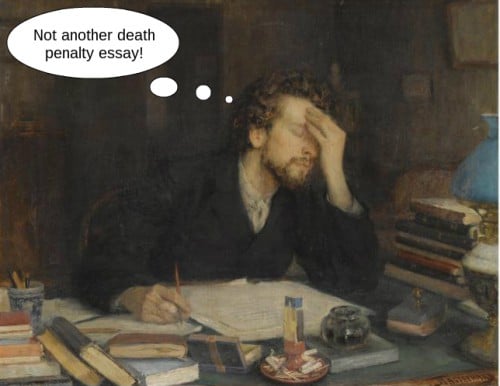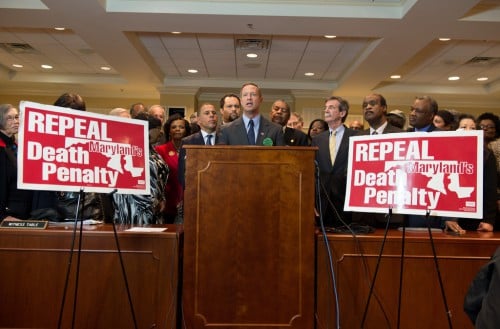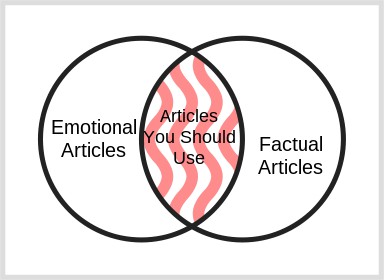You have probably had to write about a fair share of boring essay topics, but this time, you’ve been dealt a topic that you think is completely played out–the death sentence.

You may feel like your teacher is giving you the death sentence by making you write this paper in the first place, right? Well, don’t worry. I have ten death penalty articles that will help you turn a stale topic into a well-written and interesting essay.
What to Consider When Choosing Death Penalty Articles
Before I get to the good stuff, I’ll let you know the secrets to choosing the right kinds of death penalty articles for your essay.
Choose articles from reputable sources. This doesn’t always mean that you have to get an article from a well-known news website or national newspaper, but that the article should be backed up with cited facts. If you use statistics, make sure you know where the numbers are coming from.
Choose your death penalty articles from a variety of sources. This means checking out sources from different states and different sides of the political spectrum. It also means using articles from both points of view. Even if you have a firm opinion, you need to understand the other arguments out there so you can counter them.
Be aware of biases. Most people who write about the death penalty have an opinion one way or the other about it. Because of the requirements of some publications, they may not be able to vehemently express these opinions, but you should still be able to at least tell if it’s an article that is for or against the death penalty. Look at the information that’s presented and think about what information may be missing that would make it more balanced.
Now that we’ve covered what to look for in those death penalty articles, let’s get to some more concrete examples.
For each article I give you, I’ve also included an MLA citation. If you use the citation in your paper, don’t forget to update the access date (in this case 14 Jan. 2015) to the date you accessed the site.
Also, check with your teacher to see if you should be using a different type of citation style in your paper (such as APA or Chicago).
All right, let’s get started with four pro- death penalty articles.
4 Pro-Death Penalty Articles

How the Death Penalty Saves Lives
Muhlhausen, David B. “How the Death Penalty Saves Lives.” U.S. News and World Report. U.S. News and World Report LP, 29 Sept. 2014. Web. 14 Jan. 2015.
What it’s about: This article begins with a case of a man who was sentenced to the death penalty, giving the details of the two first-degree murders he committed. It then covers the popular opinions of death penalty sentences, and goes on to state and give statistics indicating that state executions deter anywhere from 2 to 20 murders within Texas annually. It concludes by stating that the execution of criminals is a deterrent for murderers and ultimately saves innocent lives.
Why it’s a good source: Though the article does not include links to the studies and polls it references, it gives substantial statistics and cites where they came from–Duke University study and a Gallup poll. The sources are credible, and the article also includes anecdotal support.
Execution Saves Innocents
Jacoby, Jeff. “Execution Saves Innocents.” Boston Globe. The New York Times Company, 28 Sept. 2003. Web. 14 Jan. 2015.
What it’s about: Jacoby’s article tells of then-governor of Massachusetts Mitt Romney’s plan to create a fool-proof, error-free death penalty. This way no innocent lives would be sentenced to death. The article admits that 100% accuracy in anything is impossible, but it commends Romney for trying. Jacoby then goes on to give evidence of studies correlating lower homicide rates in states with the death penalty.
Why it’s a good source: The article uses findings from a variety of sources to support its claim of capital punishment leading to lower homicide rates. It also provides links to a study from the University of Colorado and a paper from Emory University to help back up these claims as well.
Death Penalty Repeal
Gibson, Kyle. “Death Penalty Repeal: It’s Necessary to Use Capital Punishment in a Free World.” Mic. Mic Network Inc., 23 June 2013. Web. 14 Jan. 2015.
What it’s about: This article is the first of two parts and uses emotion more than straight facts. It says that capital punishment serves as retribution for victims and their families, as well as a deterrence for other murders. However, Gibson does give some figures in support of using the death penalty over life in prison because, he notes, life in prison does not truly separate the criminal from society due to gang connections both in and out of prison.
Why it’s a good source: This article takes a different approach than most other pro-death sentence articles. It gives a link to a document from the US Department of Justice and provides numbers on the amount of violence that occurs at the hands of prison gangs. Because of this unique argument, this article should not be ignored.
Mr. Death Penalty
Caplan-Bricker, Nora. “Mr. Death Penalty.” National Journal. National Journal Group Inc., 06 Sept. 2014. Web. 14 Jan. 2015.
What it’s about: This article does not state the author’s opinion, but concentrates on an avid death penalty advocate, Kent Scheidegger. Scheidegger is a California lawyer who is a staunch pro-death penalty supporter. The article lists his responses to common arguments from those opposed to the death penalty, such as the racial biases and whether the death penalty actually deters criminals. He responds by saying that capital punishment is not inherently racist and that the people studying deterrence are discouraged and, thus, quiet about their research.
Why it’s a good source: It is an interview–but not a direct transcript–involving one of the most active members of the pro-capital punishment community. It is a good source for pulling direct quotes instead of just giving statistics.
Now that you’ve seen arguments in favor, let’s take a close look at four anti- death penalty articles.
4 Anti-Death Penalty Articles

In Death Penalty’s Steady Decline, Some Experts See a Societal Shift
Eckholm, Erik. “In Death Penalty’s Steady Decline, Some Experts See a Societal Shift.” The New York Times. The New York Times Company, 19 Dec. 2013. Web. 14 Jan. 2015.
What it’s about: Although this article does not explicitly state an anti-death penalty point of view, it does have those undertones. It lists issues such as lethal drug shortages and legal expenses as reasons why the death penalty is losing popularity. It also goes into some detail about the numbers of death penalty sentences and executions lowering in Texas and California, where historically they have been very high.
Why it’s a good source: This article gives a lot of good statistics and links about public perception of the death sentence and how it has changed over time. The article is very straightforward with little to no emotional appeal.
Cruel and Unusual
Toobin, Jeffrey. “Cruel and Unusual.” New Yorker. New Yorker, 23 Dec. 2013. Web. 14 Jan. 2015.
What it’s about: This article discusses the history of the death penalty from hanging to the electric chair to lethal injection. It then discusses the problems that the United States has had in procuring the drugs needed for lethal injections–the drugs supplied from Europe have been sold under the condition that they not be used for lethal injection. The author ends by calling executions “grotesque” and, as the title suggests, cruel and unusual, no matter the method.
Why it’s a good source: Although it is primarily based on an emotional appeal, this is a good article to get background and historical information about the death penalty. It includes many facts and dates about the shifts in procedures of the death penalty and gives more information than other death penalty articles about the lethal injection drug shortage.
Slow Death of the Death Penalty
“Slow Death of the Death Penalty.” Economist. The Economist Newspaper Limited, 26 Apr. 2014. Web. 14 Jan. 2015.
What it’s about: This article does not seek emotional appeals to the readers, but cites the e statistically fewer numbers of death penalty sentences and executions. It also gives four reasons as to why the death penalty is becoming less favorable: it’s not actually proven to deter murders, wrongly convicted people have been executed, it has become more expensive to carry out a death sentence than to impose a life sentence, and the shortage of lethal injection drugs has caused some states to turn to some shadier methods of acquiring drugs.
Why it’s a good source: This article includes strong points to work from and presents everything in a straightforward way. It also gives in-depth information about the lethal injection drug shortage and statistics on the public’s views on the death sentence.
Why the Death Penalty Needs to Die
Gillespie, Nick. “Why the Death Penalty Needs to Die.” The Daily Beast. The Daily Beast, 31 July 2014. Web. 14 Jan. 2015.
What it’s about: Gillespie’s article takes a very emotional approach, saying that state governments should protect the lives of all citizens, even convicted murderers. However, he backs up his emotional statements with statistics and links to studies that indicate that the death penalty is costly, doesn’t necessarily deter murders, and is imposed on people who are innocent of the crimes for which they were convicted.
Why it’s a good source: This article also gives important points to work from, similar to the previous article, and it works to detract from the arguments of death penalty supporters. It includes a few links to studies and organizations that oppose the death penalty.
2 Other Death Penalty Articles
The death penalty articles I’ve listed below focus less about whether the death penalty is right or wrong, and more about the problems with the current system.
In Texas, Perfect Storm for Executions
Steiker, Jordan. “In Texas, Perfect Storm for Executions.” My San Antonio. Hearst Newspapers LLC, 20 June 2014. Web. 14 Jan. 2015.
What it’s about: This article is not directly for or against the death penalty in general; it instead points out the situations that lead to the high number of death penalty sentences and executions in Texas. Improperly trained defense lawyers, racial discrimination by juries, judges that don’t follow protocol, and rushed post-conviction procedures are all cited as reasons for so many executions. Overall this article points out the flaws of the death penalty system in Texas, but does not take a stance against the concept of the death penalty in general.
Why it’s a good source: This source gives a lot of specific information about what one state is doing wrong, complete with anecdotes and numbers. It can be used in both pro- and anti-death penalty essays.
What Americans Don’t Understand About the Death Penalty
Cohen, Andrew. “What Americans Don’t Understand About the Death Penalty.” The Atlantic. The Atlantic Monthly Group, 30 Oct. 2013. Web. 14 Jan. 2015.
What it’s about: This article, like the one above, is more concerned with problems within the structure of the death penalty than with whether or not there should be a death penalty. It uses Gallup poll data to explain national attitudes toward the death penalty and whether the death penalty is carried out justly and with the right frequency. It also gives statistics on the racial disparity of capital punishment.
Why it’s a good source: Again, this article could be used for either side of the argument. It gives direct quotes from Gallup poll findings about public opinion. The statistics on racial disparity are all backed up by links from credible sources.
As you can tell, there are a lot of different types of sources out there–some are emotional, some are dry and factual. If possible, you should try to take advantage of all of them. It will make your arguments and the support for those arguments much stronger.

If you near the end of your essay and don’t feel confident that you have enough support, or are just unsure about your grammar, send it to one of the Kibin editors. They’ll look over it and give you suggestions to make it the best it can be.
Happy writing!

